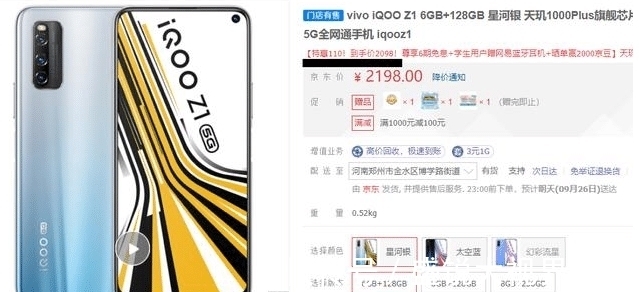用Java的套接字编程实现一个多线程的回显(echo)服务器。
import java.io.BufferedReader;
import java.io.IOException;
import java.io.InputStreamReader;
import java.io.PrintWriter;
import java.net.ServerSocket;
import java.net.Socket;
public class EchoServer {private static final int ECHO_SERVER_PORT = 6789;
public static void main(String[] args) {
try(ServerSocket server = new ServerSocket(ECHO_SERVER_PORT)) {
System.out.println("服务器已经启动...");
while(true) {
Socket client = server.accept();
new Thread(new ClientHandler(client)).start();
}
} catch (IOException e) {
e.printStackTrace();
}
}private static class ClientHandler implements Runnable {
private Socket client;
public ClientHandler(Socket client) {
this.client = client;
}@Override
public void run() {
try(BufferedReader br = new BufferedReader(new InputStreamReader(client.getInputStream()));
PrintWriter pw = new PrintWriter(client.getOutputStream())) {
String msg = br.readLine();
System.out.println("收到" + client.getInetAddress() + "发送的: " + msg);
pw.println(msg);
pw.flush();
} catch(Exception ex) {
ex.printStackTrace();
} finally {
try {
client.close();
} catch (IOException e) {
e.printStackTrace();
}
}
}
}}- 1
- 2
- 3
- 4
- 5
- 6
- 7
- 8
- 9
- 10
- 11
- 12
- 13
- 14
- 15
- 16
- 17
- 18
- 19
- 20
- 21
- 22
- 23
- 24
- 25
- 26
- 27
- 28
- 29
- 30
- 31
- 32
- 33
- 34
- 35
- 36
- 37
- 38
- 39
- 40
- 41
- 42
- 43
- 44
- 45
- 46
- 47
- 48
- 49
- 50
- 51
- 1
- 2
- 3
- 4
- 5
- 6
- 7
- 8
- 9
- 10
- 11
- 12
- 13
- 14
- 15
- 16
- 17
- 18
- 19
- 20
- 21
- 22
- 23
- 24
- 25
- 26
- 27
- 28
- 29
- 30
- 31
- 32
- 33
- 34
- 35
- 36
- 37
- 38
- 39
- 40
- 41
- 42
- 43
- 44
- 45
- 46
- 47
- 48
- 49
- 50
- 51
【用Java的套接字编程实现一个多线程的回显(echo)服务器。】注意:上面的代码使用了Java 7的TWR语法,由于很多外部资源类都间接的实现了AutoCloseable接口(单方法回调接口),因此可以利用TWR语法在try结束的时候通过回调的方式自动调用外部资源类的close()方法,避免书写冗长的finally代码块。此外,上面的代码用一个静态内部类实现线程的功能,使用多线程可以避免一个用户I/O操作所产生的中断影响其他用户对服务器的访问,简单的说就是一个用户的输入操作不会造成其他用户的阻塞。当然,上面的代码使用线程池可以获得更好的性能,因为频繁的创建和销毁线程所造成的开销也是不可忽视的。下面是一段回显客户端测试代码:
import java.io.BufferedReader;
import java.io.InputStreamReader;
import java.io.PrintWriter;
import java.net.Socket;
import java.util.Scanner;
public class EchoClient {public static void main(String[] args) throws Exception {
Socket client = new Socket("localhost", 6789);
Scanner sc = new Scanner(System.in);
System.out.print("请输入内容: ");
String msg = sc.nextLine();
sc.close();
PrintWriter pw = new PrintWriter(client.getOutputStream());
pw.println(msg);
pw.flush();
BufferedReader br = new BufferedReader(new InputStreamReader(client.getInputStream()));
System.out.println(br.readLine());
client.close();
}
}- 1
- 2
- 3
- 4
- 5
- 6
- 7
- 8
- 9
- 10
- 11
- 12
- 13
- 14
- 15
- 16
- 17
- 18
- 19
- 20
- 21
- 22
- 1
- 2
- 3
- 4
- 5
- 6
- 7
- 8
- 9
- 10
- 11
- 12
- 13
- 14
- 15
- 16
- 17
- 18
- 19
- 20
- 21
- 22
import java.io.IOException;
import java.net.InetSocketAddress;
import java.nio.ByteBuffer;
import java.nio.CharBuffer;
import java.nio.channels.SelectionKey;
import java.nio.channels.Selector;
import java.nio.channels.ServerSocketChannel;
import java.nio.channels.SocketChannel;
import java.util.Iterator;
public class EchoServerNIO {private static final int ECHO_SERVER_PORT = 6789;
private static final int ECHO_SERVER_TIMEOUT = 5000;
private static final int BUFFER_SIZE = 1024;
private static ServerSocketChannel serverChannel = null;
private static Selector selector = null;
// 多路复用选择器
private static ByteBuffer buffer = null;
// 缓冲区public static void main(String[] args) {
init();
listen();
}private static void init() {
try {
serverChannel = ServerSocketChannel.open();
buffer = ByteBuffer.allocate(BUFFER_SIZE);
serverChannel.socket().bind(new InetSocketAddress(ECHO_SERVER_PORT));
serverChannel.configureBlocking(false);
selector = Selector.open();
serverChannel.register(selector, SelectionKey.OP_ACCEPT);
} catch (Exception e) {
throw new RuntimeException(e);
}
}private static void listen() {
while (true) {
try {
if (selector.select(ECHO_SERVER_TIMEOUT) != 0) {
Iterator it = selector.selectedKeys().iterator();
while (it.hasNext()) {
SelectionKey key = it.next();
it.remove();
handleKey(key);
}
}
} catch (Exception e) {
e.printStackTrace();
}
}
}private static void handleKey(SelectionKey key) throws IOException {
SocketChannel channel = null;
try {
if (key.isAcceptable()) {
ServerSocketChannel serverChannel = (ServerSocketChannel) key.channel();
channel = serverChannel.accept();
channel.configureBlocking(false);
channel.register(selector, SelectionKey.OP_READ);
} else if (key.isReadable()) {
channel = (SocketChannel) key.channel();
buffer.clear();
if (channel.read(buffer) > 0) {
buffer.flip();
CharBuffer charBuffer = CharsetHelper.decode(buffer);
String msg = charBuffer.toString();
System.out.println("收到" + channel.getRemoteAddress() + "的消息:" + msg);
channel.write(CharsetHelper.encode(CharBuffer.wrap(msg)));
} else {
channel.close();
}
}
} catch (Exception e) {
e.printStackTrace();
if (channel != null) {
channel.close();
}
}
}}- 1
- 2
- 3
- 4
- 5
- 6
- 7
- 8
- 9
- 10
- 11
- 12
- 13
- 14
- 15
- 16
- 17
- 18
- 19
- 20
- 21
- 22
- 23
- 24
- 25
- 26
- 27
- 28
- 29
- 30
- 31
- 32
- 33
- 34
- 35
- 36
- 37
- 38
- 39
- 40
- 41
- 42
- 43
- 44
- 45
- 46
- 47
- 48
- 49
- 50
- 51
- 52
- 53
- 54
- 55
- 56
- 57
- 58
- 59
- 60
- 61
- 62
- 63
- 64
- 65
- 66
- 67
- 68
- 69
- 70
- 71
- 72
- 73
- 74
- 75
- 76
- 77
- 78
- 79
- 80
- 81
- 82
- 83
- 84
- 85
- 86
- 1
- 2
- 3
- 4
- 5
- 6
- 7
- 8
- 9
- 10
- 11
- 12
- 13
- 14
- 15
- 16
- 17
- 18
- 19
- 20
- 21
- 22
- 23
- 24
- 25
- 26
- 27
- 28
- 29
- 30
- 31
- 32
- 33
- 34
- 35
- 36
- 37
- 38
- 39
- 40
- 41
- 42
- 43
- 44
- 45
- 46
- 47
- 48
- 49
- 50
- 51
- 52
- 53
- 54
- 55
- 56
- 57
- 58
- 59
- 60
- 61
- 62
- 63
- 64
- 65
- 66
- 67
- 68
- 69
- 70
- 71
- 72
- 73
- 74
- 75
- 76
- 77
- 78
- 79
- 80
- 81
- 82
- 83
- 84
- 85
- 86
import java.nio.ByteBuffer;
import java.nio.CharBuffer;
import java.nio.charset.CharacterCodingException;
import java.nio.charset.Charset;
import java.nio.charset.CharsetDecoder;
import java.nio.charset.CharsetEncoder;
public final class CharsetHelper {
private static final String UTF_8 = "UTF-8";
private static CharsetEncoder encoder = Charset.forName(UTF_8).newEncoder();
private static CharsetDecoder decoder = Charset.forName(UTF_8).newDecoder();
private CharsetHelper() {
}public static ByteBuffer encode(CharBuffer in) throws CharacterCodingException{
return encoder.encode(in);
}public static CharBuffer decode(ByteBuffer in) throws CharacterCodingException{
return decoder.decode(in);
}
}推荐阅读
- 热闹中的孤独
- JAVA(抽象类与接口的区别&重载与重写&内存泄漏)
- 放屁有这三个特征的,请注意啦!这说明你的身体毒素太多
- 一个人的旅行,三亚
- 布丽吉特,人生绝对的赢家
- 慢慢的美丽
- 尽力
- 一个小故事,我的思考。
- 家乡的那条小河
- Docker应用:容器间通信与Mariadb数据库主从复制













